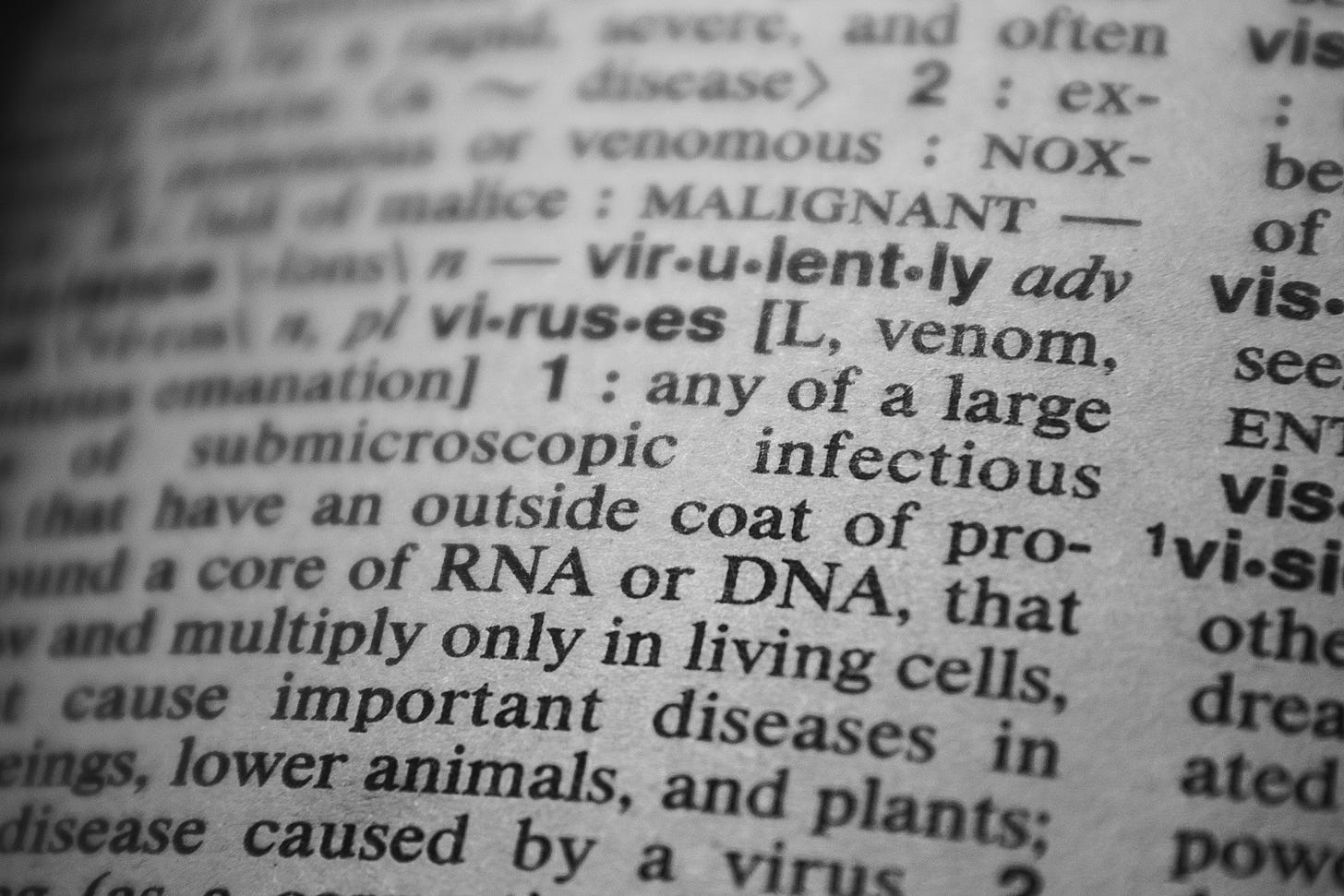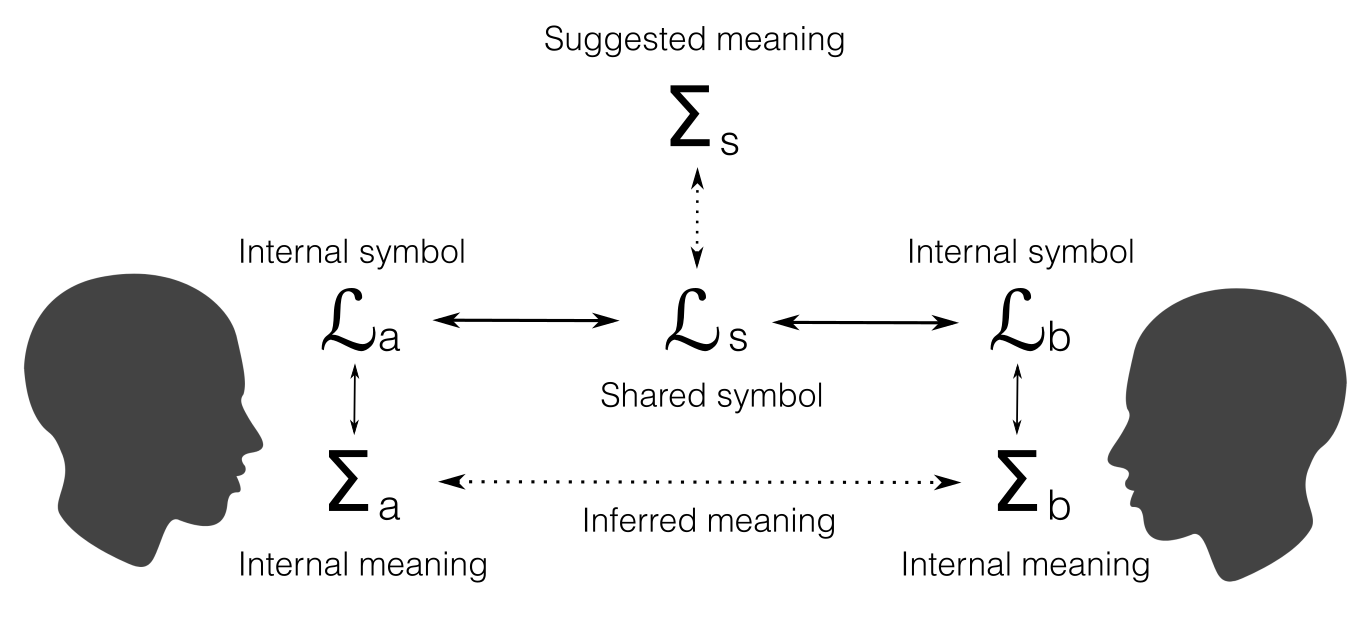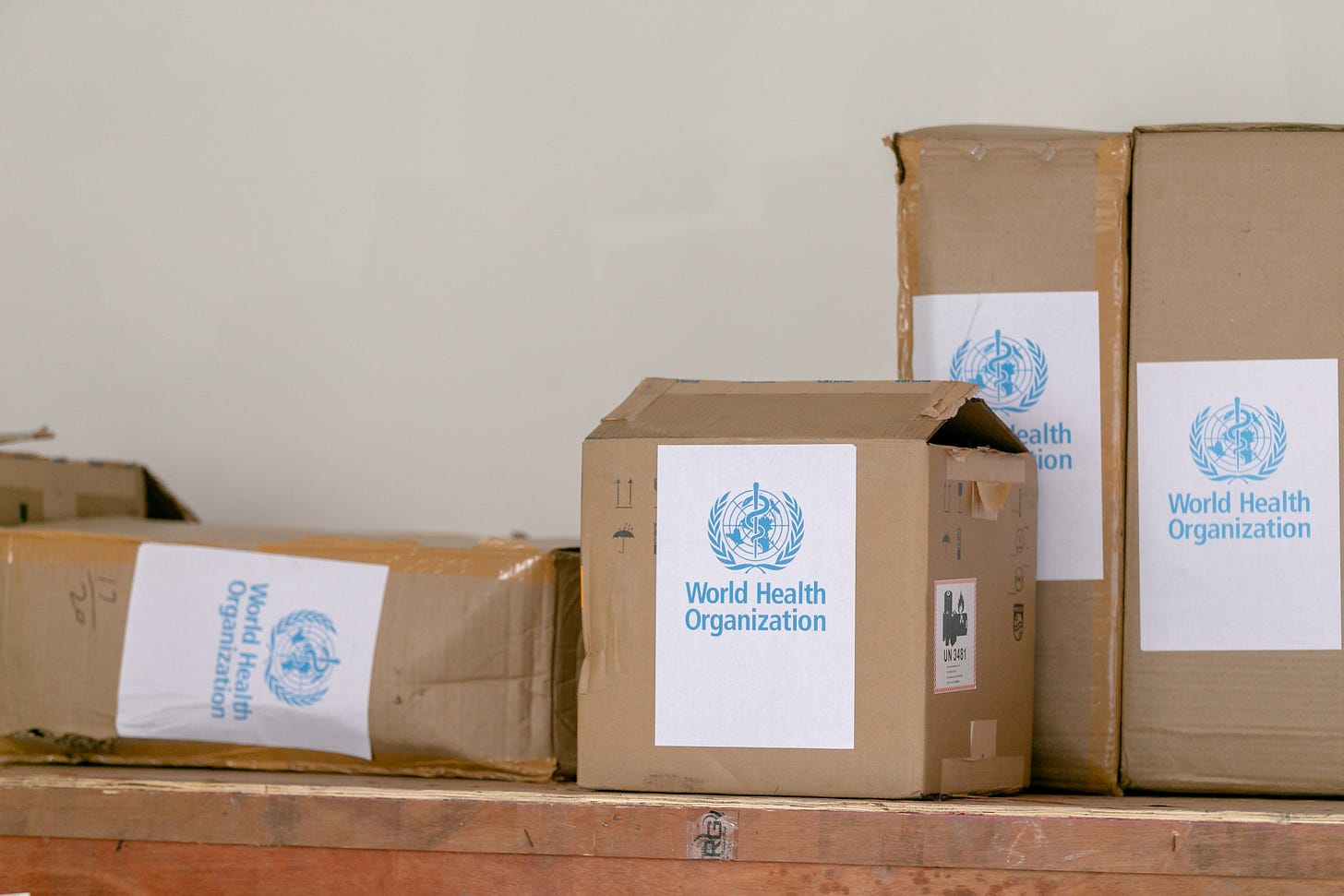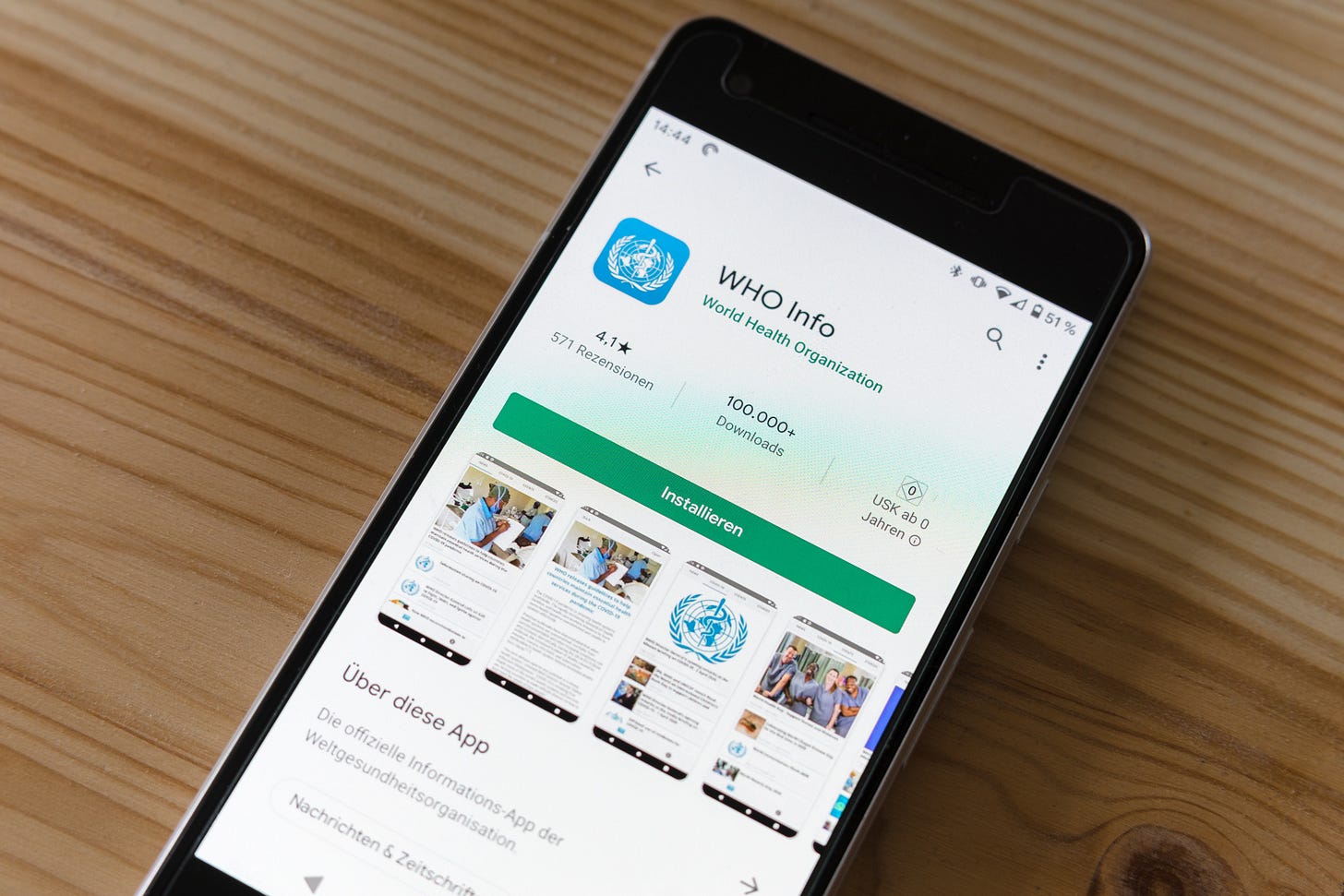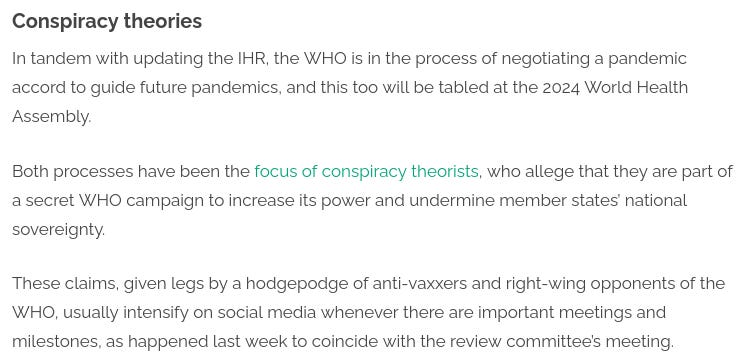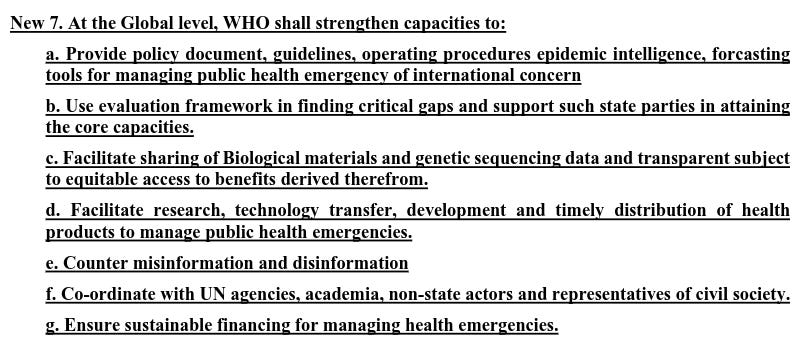The language we naturally speak is very deceptive.
How so?
In a previous article, I explained that our natural language does not function like a mathematical language. A mathematical language — more generally a formal language — prescribes a fixed lexical grammar that maps to fixed interpretations.
In a formal language, every statement is clear and precise with no ambiguity.
But English on the other hand happens to be very ambiguous.
What entity dictates the meaning of English words?
Is it the dictionary?
A government authority?
A non-governmental agency?
There is an interesting passage from the Bible:
The Lord said, “If as one people speaking the same language they have begun to do this, then nothing they plan to do will be impossible for them. Come, let us go down and confuse their language so they will not understand each other.”
So the Lord scattered them from there over all the earth, and they stopped building the city. That is why it was called Babel—because there the Lord confused the language of the whole world. From there the Lord scattered them over the face of the whole earth.
From the perspective of a formal language, what could this mean as a theory?
Let’s create a communication hypothesis.
As a theoretical premise: every individual speaks their own language.
Thus each individual would have their own lexicon, grammar and interpretations. Every statement is clear and precise with no ambiguity, but only to the individual.
Communication between individuals would therefore produce misinterpretations.
i.e., Interpersonal relationships are full of confusion and misunderstanding.
So what is the English language in this framework?
The English language is an interchange medium between individual languages, which acts as a signalling system through a shared lexicon using a suggested grammatical structure and interpretations.
Individual languages must adapt over time by modifying mental symbols and interpretations. These changes occur gradually through social and emotional interaction.
But there is an exploitable problem with this kind of communication system.
Shared language distortions can easily convey false information. This is especially true if an individual’s internal interpretations becomes overly emotional.
Take for example the word: fascist.
Do people’s minds produce the dictionary’s entry when they hear this word?
No.This word’s interpretation likely produces a feeling or an image.
For example:
a :: «fascist» → fear.
b :: «fascist» → anger.
c :: «fascist» → hate.
d :: «anti» «fascist» → self-gratification.
What is truth to the individual if emotional words are distorted over time?
(Feel good words become the basis of reality).
The basic tool for the manipulation of reality is the manipulation of words. If you can control the meaning of words, you can control the people who must use the words.
— Philip K. Dick1
If you can control words and permitted speech then you can control minds.
There are many misused emotional words that influence our behaviour.
For example:
Does «pandemic» mean what we think it means to justify its fear response?
Definition changes are not harmless
This is the definition of pandemic according to Webster’s dictionary in 1983.
pan- + demos: all + people
pandemic: 1. occurring over a wide geographic area and affecting an exceptionally high proportion of the population; 2. pandemic outbreak of a disease.
The key word is disease, which implies serious illness and death. A pandemic is serious illness and death that affects an exceptionally high proportion of the population.
WHO pandemic definitions
The World Health Organization (WHO) had a similar definition back in 2003.
An influenza pandemic occurs when a new influenza virus appears against which the human population has no immunity, resulting in several, simultaneous epidemics worldwide with enormous numbers of deaths and illness.
— Pandemic preparedness, WHO (2003)
This definition coincides with pandemic preparedness documentation that emphasized the severity of illness and death based on models and estimates.
A 2005 WHO preparedness document titled ‘Ten things you need to know about pandemic influenza’ stated that “large numbers of deaths will occur” and “economic and social disruption will be great.”
Statistical projections of future pandemic mortality varied widely, but even the self-described “best case scenarios” yielded numbers that were four to 30 times greater than the estimated number of deaths from seasonal influenza.
— The elusive definition of pandemic influenza, Doshi P. (2011)
There are consequences from a definition change
For some reason — however — the WHO altered its recognition of a pandemic in 2009.
There has been considerable controversy over the past year, particularly in Europe, over whether the World Health Organization (WHO) changed its definition of pandemic influenza in 2009, after novel H1N1 influenza was identified.
— The elusive definition of pandemic influenza, Doshi P. (2011)2
Just before the H1N1 outbreak, the WHO updated its threshold requirements necessary to declare a pandemic, which effectively changes the meaning of pandemic.
Not withstanding these assertions, there is clear evidence that changes were made and that, most importantly, the former criteria of ‘impact and severity’ of an epidemic in terms of the number of infections and deaths was no longer considered relevant in the updated document.
In other words, the pandemic could be declared without the need to show that it was likely to be severe in terms of its impact on the population (for example regarding severity of illness and death).
— Changing the definition of a pandemic3, Council of Europe Parliamentary Assembly
The H1N1 pandemic was declared without evidence that demonstrated a severe health impact on the population.
A number of members of the scientific community became concerned when WHO rapidly moved towards pandemic level 6 at a time when the influenza presented relatively mild symptoms.
This combined with the change in the definition of pandemic levels just before the declaration of the H1N1 pandemic heightened concerns.
As Dr Wolfgang Wodarg, German epidemiologist and former member of the Parliamentary Assembly highlighted at the public hearing on 26 January 2010, the declaration of the current pandemic was only made possible by changing the definition of a pandemic and by lowering the threshold for its declaration.
— Changing the definition of a pandemic, Council of Europe Parliamentary Assembly
What is the association between a pandemic declaration and government action?
International Health Regulations (IHR) were adopted by the World Health Assembly in 1969 and were amended in 1973 and 1981. Significant revisions were made in 1995 and 2005.4
IHR is the only international legal treaty that explicitly regulates a state's obligation to the international community. The IHR empowers the WHO to act as the central repository of all required disease surveillance information under which states have a legal obligation to report disease outbreaks.5
The pandemic label is used through IHR to initiate government action.
(i.e., Action is initiated by appointed experts from the WHO — a non-elected private entity).
Thus, the WHO has the avenue to legally bypass government process via declaration.
Whether it is called an outbreak, epidemic, or pandemic, influenza has a cyclic propensity to capture the world’s attention and to generate large public health responses.
However, with the exception of the 1918 pandemic, which all agree was catastrophically severe, the impact of more recent outbreaks carrying the “pandemic” label is difficult to gauge, as their divergent descriptions suggest.
… we must come to broader agreement about acceptable sources of expert advice. While the IHR Review Committee “found no evidence of malfeasance”, it urged WHO to “clarify its standards and adopt more transparent procedures for the appointment of members of expert committees.”
— The elusive definition of pandemic influenza, Doshi P. (2011)
However, previous suspicion has been raised regarding the WHO’s conflict of interest.
In addition, concern over ties between WHO advisers and industry fuelled suspicion about the independence and appropriateness of the decisions made at the national and international levels
— The elusive definition of pandemic influenza, Doshi P. (2011)
The declaration of the H1N1 pandemic was only possible after the WHO changed the definition of pandemic and lowered its thresholds, which captured the world’s attention and generated large public health responses.
Summary
Language distortion has profound consequences. Not just in terms of individuals, but also with respect to government action, because laws can be invoked by altering the meaning of key words. Does this seem harmless to you?
Please note the following:
The WHO can declare a pandemic without evidence of severe illness or death.
A pandemic declaration initiates a legal IHR government response.
WHO advisers have a suspected conflict of interest with industry.
In light of COVID-19, there are new proposed amendments to IHR (2005):
These amendments legally impact government response to a pandemic declaration.
Are there valid concerns with the new proposed IHR amendments?
Some claim concerns with these amendments are an anti-vax right-wing conspiracy.
(More than likely transphobic pro-Putin anti-science misogynists fuelled by climate change).
This links to a Snopes Fact Check, which ‘de-bunks’ these claims.
The simple answer is to read the amendments yourself and use your brain.
IHR is a legal document that regulates a state's obligation to the international community through a private non-elected entity such as the WHO.
Existing IHR articles have already been invoked through distorted definitions.
Clearly this has the potential to undermine national sovereignty.
No amount of name calling changes that.
A few parting thoughts:
Consider the impact of language distortion in media, government and social life.
Listen to as many varying opinions as possible and resist censorship.
Recognize the creeping consolidation of power in public / private partnerships.
Please feel free to share more information or opinions regarding IHR amendments in the comments below.
Various interpretations of IHR amendments
Australia parliament

Summary of proposed changes



Look for yourself…
Dr. Michael Yeadon
Philip Kindred Dick (Dec. 16, 1928 – Mar. 2, 1982) was an American science fiction writer.
Doshi P. (2011). The elusive definition of pandemic influenza. Bulletin of the World Health Organization, 89(7), 532–538. https://doi.org/10.2471/BLT.11.086173
Council of Europe (Jun. 7, 2010). The handling of the H1N1 pandemic: more transparency needed. Parliamentary Assembly. http://assembly.coe.int/Documents/WorkingDocs/Doc10/EDOC12283.pdf
World Health Organization (Apr. 6, 2023). International Health Regulations (IHR) Background. Regional office for the Eastern Mediterranean. https://www.emro.who.int/international-health-regulations/about/background.html
Youde, Jeremy (2010), Youde, Jeremy (ed.). The International Health Regulations. Biopolitical Surveillance and Public Health in International Politics, New York: Palgrave Macmillan US, pp. 147–175, doi:10.1057/9780230104785_7, ISBN 978-0-230-10478-5


